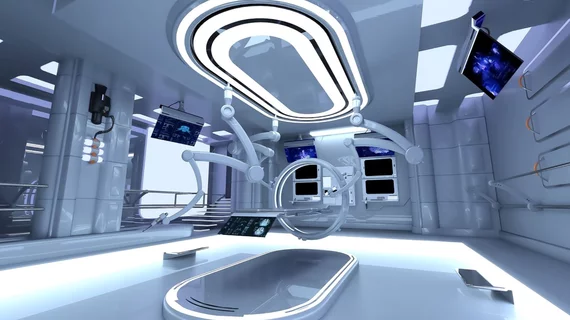Demand for AI, VR driving OR technology market toward $7B
The U.S. and European market for operating-room (OR) equipment and technology will grow from $4.5 billion now to more than $7 billion by 2022. Hospitals hoping to keep up with their competition during the boomlet need to invest in integrating robotics to improve precision, virtual reality to inform pre-surgery planning and AI to analyze risks.
So says Frost & Sullivan in new market research it began promoting June 27.
Other key components of winning strategies will include partnering with industry to reach a broader patient base and providing patient-centric services that “are not necessarily aligned to clinical outcomes,” Frost & Sullivan says.
A senior analyst with the company adds that, by 2022, some 35% to 45% of ORs worldwide will become integrated ORs.
“Approximately $30 billion worth of integration opportunities are likely to become available to healthcare and non-healthcare companies by this period when ORs make the transition from regular rooms to an integrated environment,” says the analyst, Bejoy Daniel.
Frost & Sullivan says the OR services segment is highly fragmented and has more potential in Europe than the United States. Still, around 70% to 75% of major hospitals have adopted OR management solutions across both geographic regions.
“The OR is transforming from a seemingly simple box into a technology-powered, infection-free and sleek surgical environment,” the company says.

